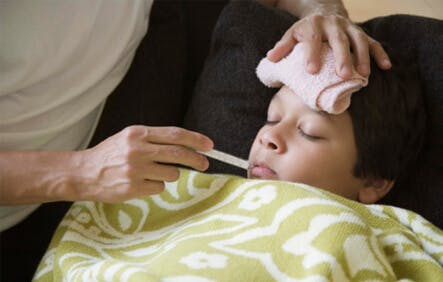Scarlet Fever: A-to-Z Guide from Diagnosis to Treatment to Prevention

Introduction to scarlet fever:
A rash as rough as sandpaper, a high fever, a child who looks quite ill…When parents learn that it is scarlet fever, tragic images from the past may be conjured up. Thankfully, with the right medicine, this one is now easy to treat.
What is scarlet fever?
Scarlet fever is a Streptococcus infection causing a high fever and a characteristic rash. It is one of the classic childhood exanthems. Unlike the others, however, it does require treatment with antibiotics. Scarlet fever is also called scarlatina, although sometimes the term scarlatina is used for milder forms of the same disease, or even just for the rash. Scarlet fever is almost always associated with a strep throat infection, although occasionally it can arise from strep in another location, such as in a wound. There are many strains of strep; some of them produce one of the three toxins that can lead to the rash. The rash is thought to be an allergic reaction to these toxins.
Who gets scarlet fever?
Scarlet fever is most common in children between the ages of 5 and 15. It is unusual in children before the third birthday, partly because it takes time for allergies to the toxins to develop. Scarlet fever is most common in the late fall, winter, and early spring, perhaps because children are in closer contact with each other during those months.
What are the symptoms of scarlet fever?
People get sick an average of 3 days after they are exposed (range, 2–5 days). Illness usually begins suddenly, with a high fever that peaks at 103°F or 104°F on the second day. Many children also have sore throat, headache, stomachache, nausea, or chills. The characteristic rash usually appears within 12 to 48 hours—while the fever is still present (unlike roseola and fifth disease, in which the fever usually has subsided before the rash appears).
The rash is usually red and has the feel of coarse sandpaper. It fades briefly when you press on it. The rash may begin in the armpits or groin but spreads to cover most of the body. The face usually does not feel rough, but the cheeks are reddened and a pale ring develops around the mouth. The rash usually peels 1 to 6 weeks later.
The tongue may be covered with a white coat, through which red taste buds are visible (a white strawberry tongue). Later, the tongue itself may be reddened and swollen (a red strawberry tongue).
The throat and tonsils are often swollen and beefy red, covered in a gray/white/yellow coat. There may be red or purple spots on the roof of the mouth. Lymph nodes in the neck may be tender.
In some people, scarlet fever is very mild, with only a few of these symptoms. Others are seriously ill, collapsing from the raging illness.
Is scarlet fever contagious?
Scarlet fever spreads by droplet and by contact transmission. Fomites and airborne transmission are rarely involved. Close contact is necessary to get the infected secretions from one person to the next. To become infected, children need to get the secretions from a sick child into their own mouths. Children are most contagious during the fever.
How is scarlet fever diagnosed?
A strep test can assist in the diagnosis, along with the appropriate history and physical findings. In the absence of the test, scarlet fever is sometimes confused with the other classic childhood exanthems (measles, rubella, fifth disease, roseola) or with mononucleosis, Staphylococcus infection, enteroviral infections, or Kawasaki disease.
How is scarlet fever treated?
Antibiotics are used to treat scarlet fever and to prevent its complications. Ibuprofen can help these children feel much better while the antibiotic is taking effect.
How can scarlet fever be prevented?
Treatment involves avoiding close contact with those who are contagious. Children should be kept out of school or daycare until they have been on antibiotics for 24 hours. Most people are no longer contagious 24 hours after starting the antibiotic. I also recommend getting a new toothbrush for children after they are no longer contagious but before they finish the antibiotics, to prevent re-infection.


